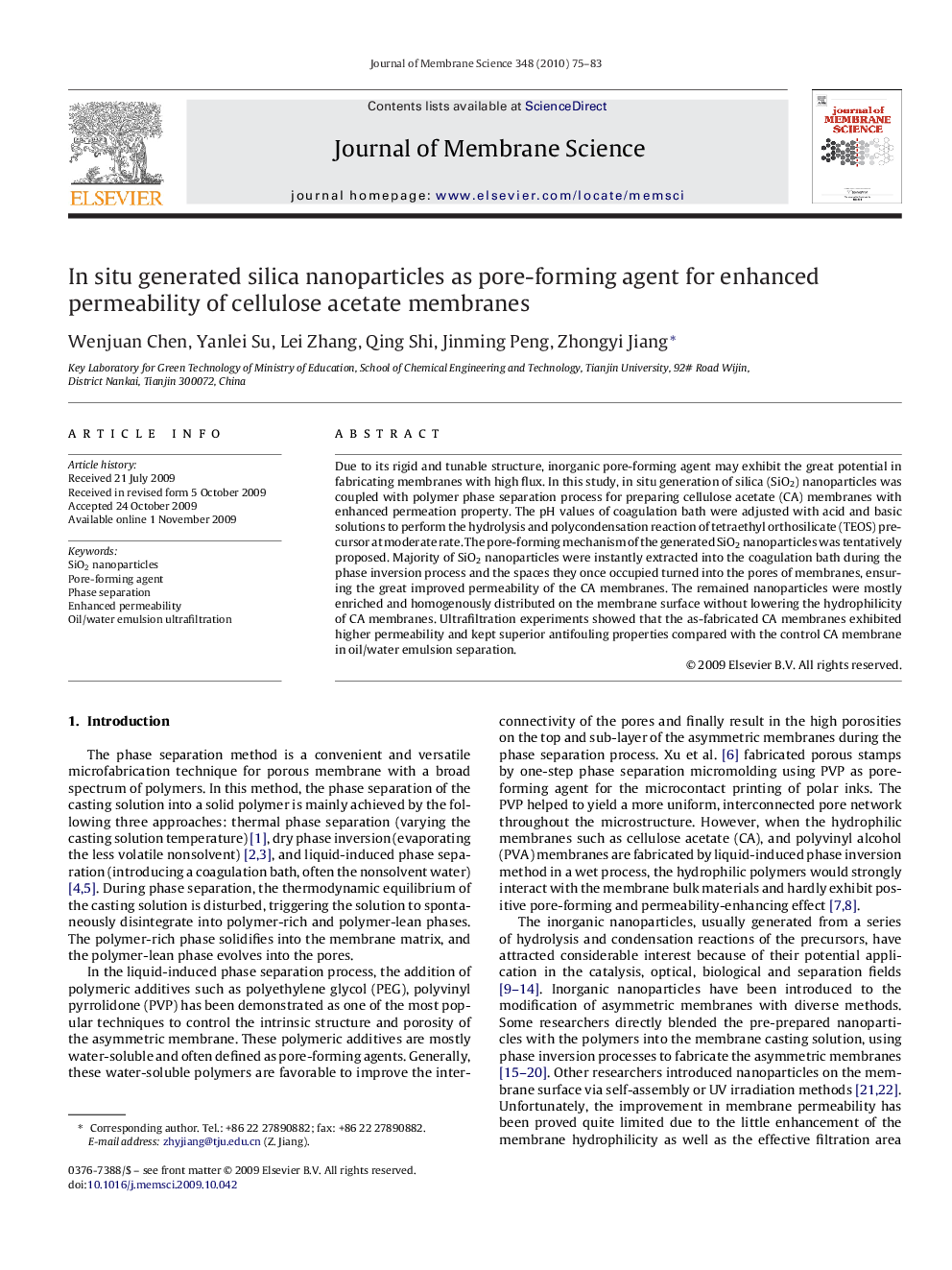| Article ID | Journal | Published Year | Pages | File Type |
|---|---|---|---|---|
| 636768 | Journal of Membrane Science | 2010 | 9 Pages |
Due to its rigid and tunable structure, inorganic pore-forming agent may exhibit the great potential in fabricating membranes with high flux. In this study, in situ generation of silica (SiO2) nanoparticles was coupled with polymer phase separation process for preparing cellulose acetate (CA) membranes with enhanced permeation property. The pH values of coagulation bath were adjusted with acid and basic solutions to perform the hydrolysis and polycondensation reaction of tetraethyl orthosilicate (TEOS) precursor at moderate rate. The pore-forming mechanism of the generated SiO2 nanoparticles was tentatively proposed. Majority of SiO2 nanoparticles were instantly extracted into the coagulation bath during the phase inversion process and the spaces they once occupied turned into the pores of membranes, ensuring the great improved permeability of the CA membranes. The remained nanoparticles were mostly enriched and homogenously distributed on the membrane surface without lowering the hydrophilicity of CA membranes. Ultrafiltration experiments showed that the as-fabricated CA membranes exhibited higher permeability and kept superior antifouling properties compared with the control CA membrane in oil/water emulsion separation.
